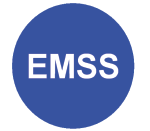Machine learning for optical sensing with grating nanostructures
- a E.D. Chubchev ,
- b I.A.Nechepurenko ,
- c A.V. Dorofeenko ,
- d K. A. Tomyshev ,
- e O.V.Butov ,
- f D.P. Kulikova ,
- g E.M. Sgibnev ,
- h G.M. Yankovsky ,
- i A.V. Baryshev ,
- j A.S. Baburin ,
- k I.A. Rodionov
- a,b,c,f,g,h,i Dukhov Research Institute of Automatics (VNIIA), 22 Sushevskaya, Moscow 127055, Russia
- b,c,d,e Kotelnikov Institute of Radioengineering and Electronics of Russian Academy of Sciences, 11-7 Mokhovaya, Moscow 125009, Russia
- c Institute for Theoretical and Applied Electromagnetics of Russian Academy of Sciences, 13 Izhorskaya, Moscow 125412, Russia
- j,k FMN Laboratory, Bauman Moscow State Technical University, 2/18 Rubtsovskaya emb., Moscow 105082, Russia
Cite as
Chubchev E.D, Nechepurenko I.A., Dorofeenko A.V., Tomyshev K.A., Butov O.V., Kulikova D.P., Sgibnev E.M., Yankovsky G.M., Baryshev A.V., Baburin A.S., Rodionov I.A. (2020). Machine learning for optical sensing with grating
nanostructures. Proceedings of the 32nd European Modeling & Simulation Symposium (EMSS 2020), pp. 330-335. DOI: https://doi.org/10.46354/i3m.2020.emss.048
Abstract
Over the past decade, machine learning has found a large number of applications in physics. Machine learning algorithms can extract the most informative features of the data, reduce the dimensionality and increase the signal-to-noise
ratio. This article discusses the use of machine learning algorithms to increase the accuracy of the optical sensors based on optical fiber Bragg grating sensor and the hydrogen sensor based on Wood anomaly in a diffraction
grating. We show that application of machine learning algorithms to experimental data processing allows reaching high accuracy and reduce level of noise in optical sensors.
References
- Altman, N. S. (1992). An introduction to kernel and nearest-neighbor nonparametric regression. The American Statistician, 46(3), 175-185.
- Askim, J. R., Mahmoudi, M., & Suslick, K. S. (2013). Optical sensor arrays for chemical sensing: the optoelectronic nose. Chemical Society Reviews, 42(22), 8649-8682.
- Chubchev, E., Nechepurenko, I., Dorofeenko, A., Vinogradov, A., & Lisyansky, A. (2020).
Nanostructured optical waveguide with a highly confined mode. JOSA B, 37(8). - Friedman, J. H. (2001). Greedy function approximation: a gradient boosting machine.
Annals of statistics, 1189-1232. - Goodfellow, I., Bengio, Y., & Courville, A. (2016). Deep learning: MIT press.
- Gorban, A. N., Kégl, B., Wunsch, D. C., & Zinovyev, A. Y. (2008). Principal manifolds for data visualization and dimension reduction (Vol. 58): Springer.
- Hotel, O., Poli, J.-P., Mer-Calfati, C., Scorsone, E., & Saada, S. (2018). A review of algorithms for SAW sensors e-nose based volatile compound identification. Sensors and Actuators B: Chemical, 255,
2472-2482.
- Ignatov, A. I., & Merzlikin, A. M. (2020). Two optical sensing elements for H2O and NO2 gas sensing based on the single plasmonic–photonic crystal slab. Advanced Optical Technologies, 1(ahead-ofprint).
- Johnson, S. R., Sutter, J. M., Engelhardt, H. L., Jurs, P. C., White, J., Kauer, J. S., . . . Walt, D. R. (1997). Identification of multiple analytes using an optical sensor array and pattern recognition neural networks.
Analytical Chemistry, 69(22), 4641-4648.
- Kornienko, V. V., Nechepurenko, I. A., Tananaev, P. N., Chubchev, E. D., Baburin, A. S., Echeistov, V. V., . . . Rodionov, I. A. (2020). Machine Learning for Optical Gas Sensing: A Leaky-Mode Humidity Sensor
as Example. IEEE Sensors Journal, 20(13), 6954-6963.
- Liu, T., Li, D., Chen, J., Chen, Y., Yang, T., & Cao, J. (2019). Active Learning on Dynamic Clustering for Drift Compensation in an Electronic Nose System Sensors, 19(16), 3601.
- Ma, Z., Luo, G., Qin, K., Wang, N., & Niu, W. (2018). Online sensor drift compensation for E-nose systems using domain adaptation and extreme learning machine. Sensors, 18(3), 742.
- Nechepurenko, I., Andrianov, E., Zyablovsky, A., Dorofeenko, A., Pukhov, A., & Lozovik, Y. E. (2018). Absorption sensor based on graphene plasmon quantum amplifier. Physical Review B, 98(7), 075411.
- Shalev-Shwartz, S., & Ben-David, S. (2014). Understanding machine learning: From theory to
algorithms: Cambridge university press. - Tomyshev, K., Manuilovich, E., Tazhetdinova, D., Dolzhenko, E., & Butov, O. (2020). High-precision data analysis for TFBG -assisted Refractometer. Sensors and Actuators A: Physical, 112016.
- Wang, Y., Yang, A., Chen, X., Wang, P., Wang, Y., & Yang, H. (2017). A deep learning approach for blind drift calibration of sensor networks. IEEE Sensors Journal, 17(13), 4158-4171.
- Zhao, X., Li, P., Xiao, K., Meng, X., Han, L., & Yu, C. (2019). Sensor Drift Compensation Based on the Improved LSTM and SVM Multi -Class Ensemble Learning Models. Sensors, 19(18), 3844.
